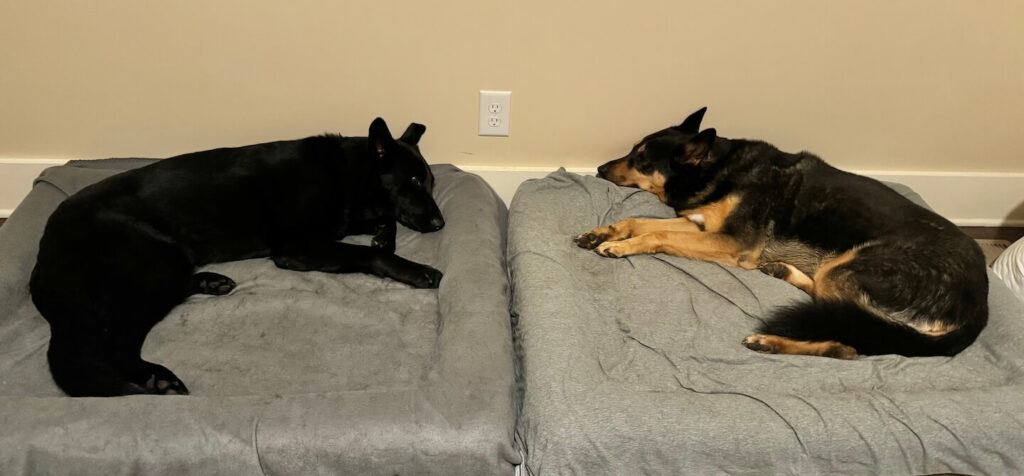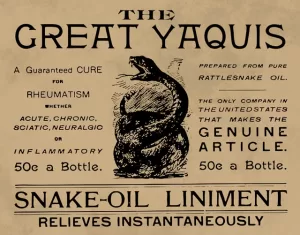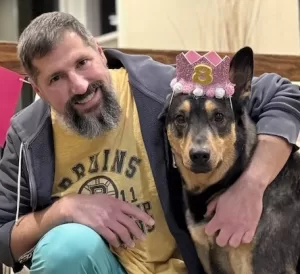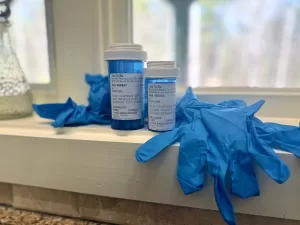Looking back, I think something really critical was missed that could’ve made a huge difference.
Five days before Cat’s spleen ruptured, she and Wolfy were roughhousing when she abruptly started limping, favoring her back right leg. To be on the safe side, we took her to the emergency vet. With German Shepherds, hip dysplasia is always a worry.
The clinic did an ultrasound on her leg. The vet diagnosed arthritis, prescribed Carprofen (75mg), Gabapentin (300mg), and Tramadol (50mg), then sent us on our way.
As we walked through the waiting area to leave, Cat acted like nothing had happened, happily greeting all the other dogs — no limp, whatsoever. I looked over at a woman I’d seen outside crying earlier — just sitting there, despondent — her face all puffy, eyes red. She then glanced at Cat & quickly turned her head. I felt guilty. Embarrassed, even. This poor woman was clearly coping with a terrible situation, and here we were with our peppy, happy pup trotting out the door.
If only I’d known I’d be right there in her shoes a few days later.
In hindsight, I think this was the first red flag. Dogs with a splenic mass often present with hind leg weakness. We believe this was the issue that day — not arthritis (which, after getting a 2nd opinion weeks later, wasn’t even that bad).
If this was truly the case, catching it could have vastly improved Cat’s outcome, as it’d have been considered “Stage 1” hemangiosarcoma. If the splenectomy is performed after the spleen ruptures, it’s considered “Stage 2” and cuts survival time by 60% (or “Stage 3,” if metastasis is found, with a grimmer outlook).
However, the vet only looked for what he expected to find. Classic confirmation bias. Had they moved the ultrasound scanner just a little further inward, they’d have seen the tumor, and things might have been very different.
I kick myself daily for missing this. But I didn’t know any better. At the time, the word “hemangiosarcoma” wasn’t even in my vocabulary…yet.








